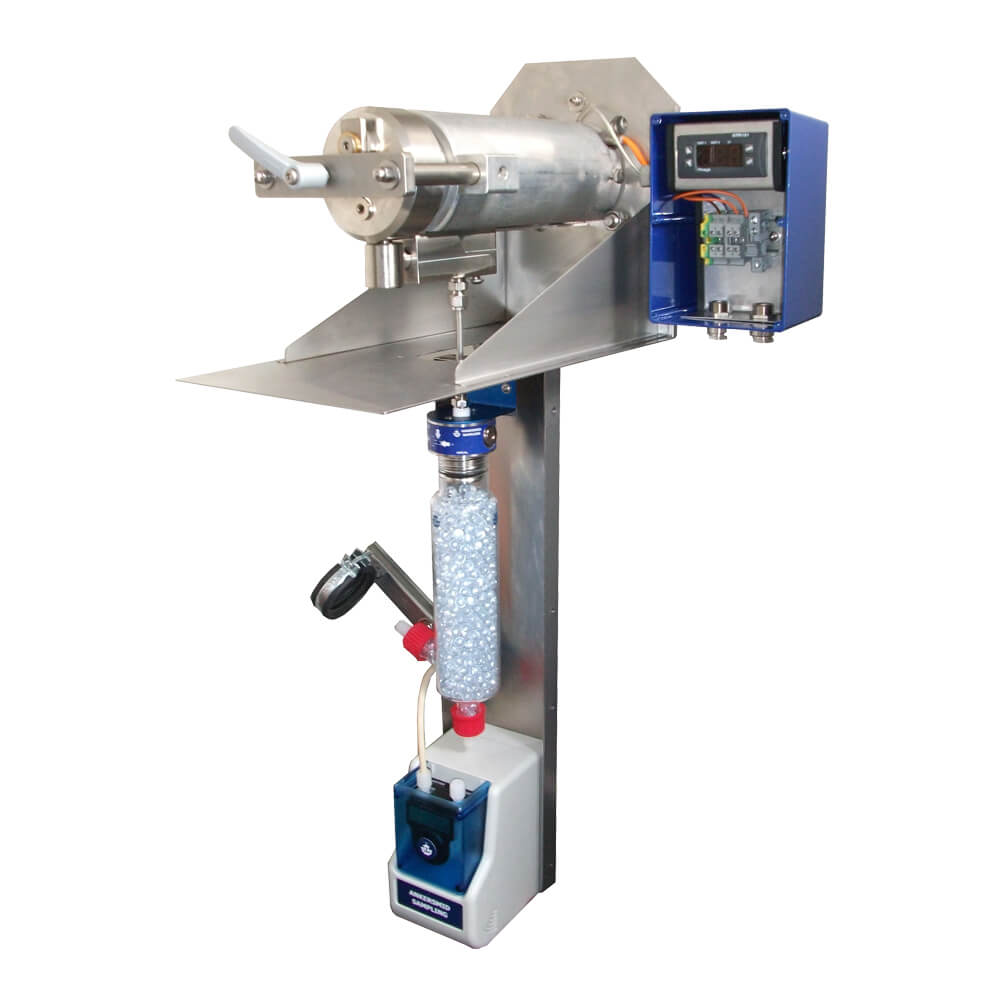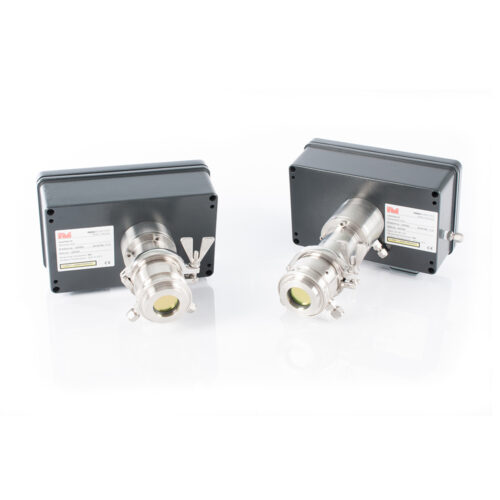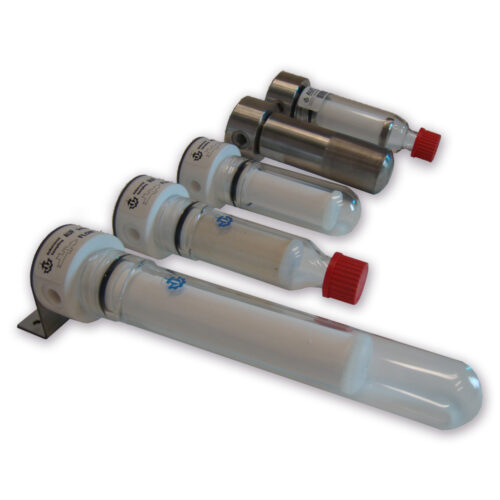ASP 320 DeNox
The probe type ASP 320 is based on the standard Ankersmid sample probe. Due to its modular and innovative design the Ankersmid heated sample probe cover also meet the special requirements of above mentioned application.
With the heated filter body a filter element of 150mm length, suitable for most applications up to 1g dust/m3, is integrated. When the integrated port is used for back-flush higher dust loads can be handled. Additional a pre-filter can be mounted on top of the sample probe.
The filter element can be replaced without any tools and in the shortest possible time. At the sample gas outlet of the probe a special non-heated condensate vessel of glass is mounted. It is filled with glass balls to extend the surface for the salification. The salt deposits and will be washed out with the condensate. A peristaltic pump type ASR25 continuously removes the condensate with the solved ammonium salts. The temperature of the vessel is higher than the ambient temperature because of the hot gas stream. Therefore a loss of measured components is negligible because of warm condensate. In case of a DeNOx application with a small content of NH3 (normally only a few ppm) it is possible to analyse SO2 and NOX without great losses (only some ppm which normally can be neglected).
To determine the loss, it is possible to give test gas via the probe to the analyser(s). A measuring fault can be found and calibrated. As an option the vessel can be heated as well to suppress chemical reactions of the measured component below a defined temperature.
At the sample outlet of the vessel a heated gas sample line series AHL can be connected.
Application
The ASP gas sample probe type ASP 320 is designed for continuous gas sampling especially at DeNOx-processes (SCR) where NH3 is added to the flue gas in order to reduce the NOX content.
This new sampling technique has also proved to be suitable for processes with very high pollutant concentrations.
In these applications, a significant problem is the measurement of NOX, SO2 and O2-concentrations.
With temperatures of <300°C, ammonium salts are produced due to the chemical reaction of NH3 and SO2/SO3 in the flue gas.
This salification blocks up filters and sample lines in a short time. In order to prevent a blocking due to salification, the probe temperature is adjusted at 320°C.








